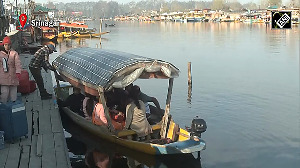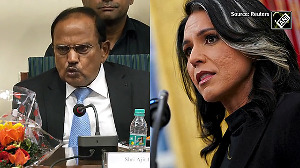Heated debates have been sparked off all over the country over the proposed implementation of the conditional access system. Should it be implemented? Why is it needed? Is it good for the consumer, or does it benefit the cable operator and the broadcaster? Will it not hike up prices? Questions abound, and answers are not very forthcoming.
Anand Patwardhan, chairman, Consumer Guidance Society of India, and Ashok Mansukhani, executive vice president, Hinduja TMT, discuss the pros and cons of CAS.
The Conditional Access System as proposed by the information and broadcasting ministry is totally anti-consumer and consumer organisations across the four metros must file public interest litigations against the government for thoughtlessly implementing CAS, to protect the interests of millions of cable television consumers and billions of rupees that are being wasted.
The government has stated that it has introduced CAS to protect consumer interest.
However, when the issue of under-declaration of subscriber homes is only among cable operators, broadcasters and the government, why is the consumer being made to pay for the high cost of set-top boxes or settle for only 30 free-to-air (FTA) channels?
It is the 'babudom' in Delhi that will now decide which channels a consumer may see -- that too, if it feels those FTA channels will be of 'consumer interest.'
This concept has, at the very implementation stage, proved to be wrong, impossible and anti-consumer, besides infringing the fundamental right of freedom of speech and expression and the right to information.
The government has failed to specify in the notification the FTA channels that can be shown in the four metros and has notified only three Doordarshan channels as 'must carry channels.' The choice of any 27 other channels is left to the cable operators.
In fact, the government can never decide which FTA channels should be broadcast, since that would be opposed to the right of a consumer to choose the channel of his choice, thereby defeating the very purpose of the CAS regime.
Even after investing anywhere between Rs 3,000 and Rs 10,000 in the set-top box, the consumer will still have no choice to 'ask and pay' for the pay channels he wishes to view but only the channels from among those 'provided' by the monopoly cable operator and the multi-system operator in his area.
The broadcaster will be offering bouquets, which means a consumer will pay more for viewing the channels of his choice out of a bouquet of channels. Again, such a policy is opposed to the basic reason for calling in this amendment.
Since the area-specific monopolistic distribution system will continue well into the CAS regime, consumers will be forced to pay for the set-top boxes if they wish to view the 'pay channels.'
The cost of the set-top box may vary from Rs 3,000 to Rs 10,000.
Thus, this experiment in four metro cities, at the cost of about Rs 3,500 crore (Rs 35 billion) to the consumer, will take place side by side with the area- specific monopolistic distribution system in the rest of the country.
The 6.4 million cable and satellite consumers in four cities pay approximately Rs 100 crore (Rs 1 billion) in monthly subscription fees to cable operators.
Consumers are now expected to cough up about Rs 3,500 crore by July 14, 2003 on set-top boxes and thereafter up to Rs 400 a month if they wish to receive the same set of channels they are receiving today.
The key issue that consumers face today is the choice of cable operator. The consumer has no choice to choose the cable operator and is forced to take the service from a single cable operator operating in his respective area.
The government has stated that one of the objectives of the 2002 amendment is to address the issue of the 'area-specific monopolistic distribution system.'
However, the government has completely failed to address this key issue facing the consumers.
Instead of making available more than one cable operator in each area, by cracking down on the cable operators' monopolies, the government will kill all the cable operators and create a huge MSO monopoly.
Most consumer complaints against the cable operators today have to do with the poor quality of service. The government has failed to provide any service quality parameters to assure a certain standard quality of service to the consumer.
There is no regulatory provision to offer a redressal mechanism for consumer complaints. Consumers are the worst hit in the current form of CAS regulation.
They will have to invest a lot of money, pay a lot more in monthly fees, and receive fewer channels with absolutely no choice in their hands for either FTA or even the pay channels; no choice of cable operator; no service quality assurance and no redressal system in place.
Anand Patwardhan, chairman, Consumer Guidance Society of India.
*****
Despite all that the vociferous anti-Conditional Access System brigade has been saying in the media and questionable motives of some 'research reports' that seem to say that CAS will lead to higher cable bills, it will empower the consumer to decide his cable budget.
CAS was introduced primarily as a solution to resolve the forced bundling of pay TV channels with arbitrary rising bi-annual costs to access pay channels. The essential objective of CAS is to differentiate cable TV into basic and premium services.
A high-voltage media campaign by a strong lobby of foreign broadcasters against CAS, designed to regulate the TV business in India, is attempting to obfuscate and divert to peripheral issues.
The CAS regime is threatening the pay TV broadcasters' advertising revenues in short run, as it will expose the true extent of their viewership to the advertisers.
It is also threatening the lucrative pay TV subscriber revenues, which these broadcasters are virtually extorting from the cable operators on unreasonable terms.
As in politics, the broadcasters' lobby claims to be championing the interests of the common man while, in fact, suggesting deferring the CAS implementation, which would actually serve their own specific designs and interests.
In whatever devious manner these foreign broadcasters try to camouflage it, the CAS dispute is not about public interest. It is about control, private control of the airwaves in India's entertainment space and over the cable TV distribution system.
Public memory is short and the broadcasters are taking advantage of this.
They need to be reminded of the 1995 judgement of the Supreme Court of India that recommended formation of an independent autonomous public authority to safeguard the airwaves -- a public property.
The foreign broadcasters have also gradually spread their tentacles into the cable TV distribution business in India by buying out substantial chunks of cable distribution networks in major cities.
The foreign broadcasters are trying to gain domination, both of TV content as well as the distribution activity of cable TV. Their clear intention is to create a vertical monopoly.
The independent Indian multi-system operators like INcablenet and medium and small cable operators in different towns and cities of India are being squeezed by broadcasters like Star, who want to control and dominate the cable distribution business as well.
The attack on the government's proposal for the introduction of CAS is being done in the guise of "helping" the consumer. The common man is being frightened by claiming that he would have to pay much higher subscriptions if CAS was to be introduced. The reality is quite different.
After CAS, the consumer will pay only Rs 72 plus local taxes for an entire free-to-air package. For the balance 35 pay channels the viewer will decide what to watch and pay for accordingly.
A bogey is being raised about timely deployment of set-top boxes and their high cost. Nobody debates or talks about the price of TVs as being a factor in watching cable TV. Depending on the customer's choice and capacity to pay, the markets make available TVs on various payment terms. So also for the set-top boxes.
In the absence of CAS, blackouts of cable operators by broadcasters will continue and rates will rise to Rs 500 or Rs 600 in the next 18 months.
Can the consumer afford to pay the increased costs when there is resistance to pay even current amounts?
If matters continue, no cable operator will survive. All players need to be compensated for their services. Without a legally mandated solution to these burning issues you could well end up without a cable industry and return to the pre-cable TV era watching only terrestrial channels like Doordarshan or, as the broadcasters would like, subscribe to the costlier DTH services.
CAS empowers viewers with the choice to decide whether they want to pay or reject the rates that broadcasters charge to view a particular channel.
It ends the forced bundling of channels where viewers had no choice but to pay for all channels even if they do not watch or want to watch them.
It ensures transparency and curbs piracy.
Ashok Mansukhani, executive vice president, Hinduja TMT.






 © 2025
© 2025